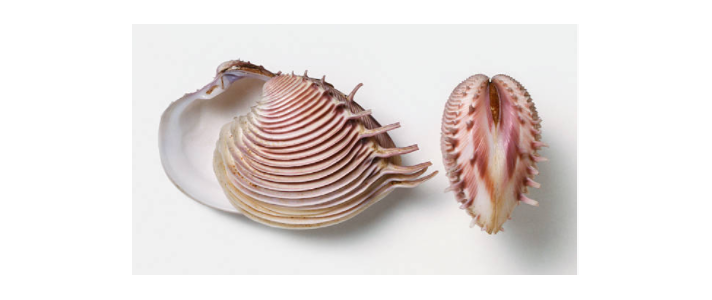Bond walked the few steps down the beach and bent and picked up one of the shells. It was alive and the two halves were shut tight. It appeared to be some kind of a cockle, rather deeply ribbed and coloured a mauve-pink. Along both edges of the hinge, thin horns stood out, about half a dozen to each side. It didn't seem to Bond a very distinguished shell. He replaced it carefully with the others.
Dr No, chapter 8

James Bond has met Honey Rider on the Island of Crab Key and having already compared her in his mind to Botticelli's Venus, Bond learns that there really IS a Venus involved here, albeit a shell, a rare shell that Honey is collecting.
‘Well then, yes, they are rare. Very. You can get five dollars for a perfect specimen. In Miami. That’s where I deal with. They’re called Venus elegans-The Elegant Venus.’ Her eyes sparkled up at him with excitement. ‘This morning I found what I wanted. The bed where they live,’ she waved towards the sea. ‘You wouldn’t find it though,’ she added with sudden carefulness. ‘It’s very deep and hidden away. I doubt if you could dive that deep. And anyway,’ she looked happy, ‘I’m going to clear the whole bed today. You’d only get the imperfect ones if you came back here.’
Bond assures here that he is not here to take her shells, and when she asks what he is doing here, he claims to only be interested in roseate spoonbills.
Is it a coincidence that Ian Fleming has two separate Venus references in the same chapter? The Roman goddess of love, sex, beauty, and fertility, first as a painting recalled by Bond, and then as a shell? There is also a third separate Venus reference, later in the book.
I would hazard the guess that Fleming was familiar with the works of Carl Linnaeus, who named the species Venus

